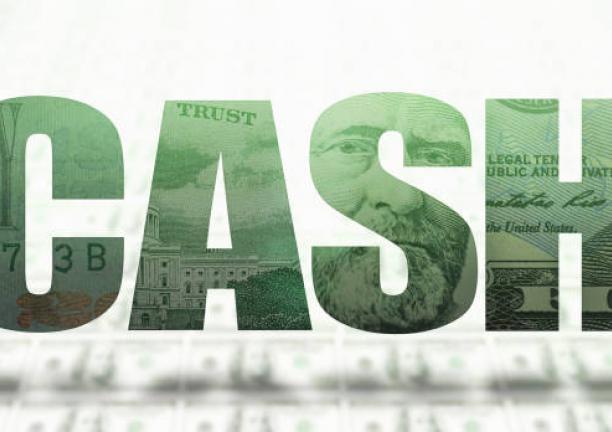Sustainable Bottom Line: Sustainable funds ended July at $363 billion in assets, there were no fund launches, and three of six selected sustainable indices outperformed.
Long-Term Net Assets: Focused Sustainable Mutual Funds and ETFs |
Focused sustainable long-term fund assets under management attributable to mutual funds and ETFs (excluding money market funds), based on Morningstar classifications, a combined total of 1,245 funds/share classes as well as ETFs (1,029 mutual funds/share classes and 216 ETFs) versus last month’s 1,275 funds/share classes, a drop of 30 funds/share classes, closed the month with $363.0 billion in net assets. This reading of assets under management has now reached the highest level so far this year but still falls short of the $366.3 billion reached at the end of November 2024. The July increase of $4.3 billion or a percentage gain of 1.2% is attributable to a combination of capital appreciation and inflows as sustainable long-term funds posted an average total return of 0.6%. July assets of mutual funds expanded by $1.9 billion, or 1%, while ETFs added $2.4 billion, for a 2% gain. Using a simple back of the envelope calculation, the gains achieved by focused sustainable long-term funds in July were almost evenly split between capital appreciation ($2.2 billion) and positive flows ($2.1 billion). From the start of the year, combined assets under management increased by $9.73 billion, or 3%. The increase was largely attributable to net gains by ETFs that added some $9.6 billion while the larger mutual funds segment was essentially flat on a year-to-date basis. |
New Sustainable Fund Launches |
No new sustainable fund listings were recorded in July, keeping the year-to-date total at five (excluding new share classes and rebrandings). This compares to seven new listings during the same period in 2024 and 62 in 2023, reflecting the dramatic slowdown in new focused sustainable fund offerings starting in mid-2023 to date. Of the five new listings this year, four were ETFs and one was a mutual fund. At the same time, the number of focused sustainable funds/share classes dropped by 30 funds/share classes. Of these, the closure of 25 mutual funds/share classes was attributable to three firms. The largest number involved 11 Natixis target date funds that were liquidated on or about July 29, 2025. Next was Franklin/Putnam that liquidated its Putnam Sustainable Retirement 2025 Fund, consisting of eight share classes, and Victory Pioneer that liquidated its Victory Pioneer Global Growth Fund and Victory Pioneer Fund with three share classes each and a combined total of $6.7 million in net assets. The remaining funds/share classes included the liquidation of the only sustainable fund offering by Lazard Asset Management, the $9.3 million Lazard US Sustainable Equity Portfolio. With this liquidation by Lazard, the firm exits the universe of managers offering a sustainable registered investment product. |
Green, Social and Sustainability Bonds Issuance (to June 30, 2025) |
The International Capital Markets Association (ICMA) updated the Green Bond Principles (and also Social Bond Principles) in June 2025 by adding an Annex consisting of Frequently Asked Questions regarding the newly added green enabling projects category and also issued a new Example Checklist to provide support to users in demonstrating how their projects align with the Green Enabling Projects Guidance document. In June 2024 ICMA expanded the definition of eligible green projects to include a new green enabling projects category, projects that do not themselves produce a direct environmental benefit but are considered critical enablers of green outcomes elsewhere in the economy or value chain, updated the Green Bond Principles (and also Social Bond Principles). Complete data through July 2025 is not yet available and the summary below covers the previous month’s reporting. According to SIFMA, global sustainable bond issuance, including green bonds, social and sustainability bonds, hit $218.2 billion, down from $234.2 billion in Q1, or a decline of 6.9%. YTD, issuance reached $452.4 billion versus $485.9 billion during the equivalent period in 2024, or a decline of 6.9%. In the US, sustainable bond issuance dropped to $37.0 billion from $55.0 billion in the first quarter of the year. This represents a sharp quarter-over-quarter decline of 32.7% and a Y/Y decline of 4.7%. At $92.0 billion in issuance during the first six months of the year, sustainable bond issuance in the US is up from $83 billion or 10.9%. US sustainable bond issuance in Q2, which accounts for around 1% of total long-term US bond issuance per SIFMA, experienced a much sharper percentage decline versus a drop of 2.9% total bond market issuance in Q2 and a Y/Y increase of 11.4%. Global green bond issuance reached $147.4 billion in Q2, versus $130.3 billion in Q1, or an increase of 13.1%. At the same time, both social and sustainability bond issuances recorded 18.3% and 39.4% declines, respectively. In the US, issuance of green bonds reached $12.5 billion in Q2 versus $15.6 billion in Q1, or a 19.5% decline. Social and sustainability bonds, at $4 billion and $20.5 billion, respectively, registered sharper drops of 37% and 38%. Assuming no change in issuance patterns over the next six months, sustainable debt volume could reach about $900 billion and exceed last year’s level of $866.2 billion. It should be noted that SIFMA’s data does not include sustainability linked bonds, sustainability linked notes and transition bonds. |
Short-Term Relative Performance: Selected Sustainable Indices vs. Conventional Indices |
U.S. equities posted another month of gains in July, with the S&P 500 up +2.2%, its third consecutive monthly rise. Except for the first trading day of July, the index was in positive territory throughout the month. The Nasdaq Composite outperformed with a +3.7% gain, while the Dow Jones Industrial Average inched up +0.2%. Notwithstanding lingering geopolitical risks and domestic governance anxieties, unresolved concerns regarding economic growth, inflation and interest rates, investor sentiment was lifted by robust Q2 corporate earnings, easing trade tensions after progress in U.S.–Japan and U.S.–Europe negotiations, and optimism around AI-driven technology growth. Sector leadership came from information technology (up over 5%), energy technology, homebuilders, and banks. Utilities and consumer staples lagged, as defensive sectors lost appeal amid risk-on sentiment. The Russell 2000 Index rose about 1.7%, trailing large-cap benchmarks. Growth stocks outpaced value, and momentum and quality factors were rewarded, reflecting continued market preference for earnings resilience and innovation-driven names. International markets delivered mixed returns. The MSCI ACWI ex USA, that includes developed as well as emerging markets, was down slightly (-0.29%) while the MSCI Emerging Markets Index advanced 1.95%. Developed EAFE markets fell 1.4%, pressured by a late-month rally in the U.S. dollar, which reduced foreign market returns for U.S. investors. Emerging markets benefited from improving commodity demand and capital inflows, particularly into Asia and Latin America. The Bloomberg U.S. Aggregate Bond Index fell 0.26% in July, trimming its year-to-date gain to 3.75%. Yields on the 10-year Treasury moved modestly higher, from roughly 4.24% to 4.37%, as resilient economic data tempered expectations for aggressive Federal Reserve rate cuts. Investment-grade corporate bonds also posted slight losses, while high-yield bonds held up better amid tight credit spreads and continued investor appetite for yield. Against this backdrop, once again three of six chosen sustainable stock and bond indices published by MSCI outperformed their conventional counterparts in July while two sustainable indices underperformed, and the single sustainable bond index was even with its underlying index. That said, the mix of outperforming indices changed from June to July. The indices are chosen to represent a broad cross section of sustainable investing market segments. Positive relative results in July were recorded by the MSCI USA Selection Index, the MSCI ACWI ex USA Selection Index, and the MSCI Emerging Markets Index that beat their underlying indices by 44 basis points (bps), 7 bps and 68 bps, respectively. At the same time, the MSCI US Small Cap Selection Index and the MSCI EAFE Selection Index underperformed, trailing their underlying counterparts by 114 bps and 42 bps, respectively. Lastly, the Bloomberg MSCI US Aggregate ESG Focus Index was even with its underlying Bloomberg US Aggregate Bond Index. With one exception, US and international stock indices posted negative relative results ranging from -1.4% to -6.4%. The one exception is the MSCI Emerging Markets Selection Index that outperformed its underlying counterpart by a wide 7.06%. The same index offers a generally compelling case over extended time intervals, ranging from the intermediate to long-term. The same can be said for the Bloomberg MSCI US Aggregate ESG Focus Index which has been closely tracking its underlying index since its inception and now covers a five-year interval. |
Sources: Morningstar Direct, MSCI, SIFMA/Dealogic Q2 2025 Quarterly Report (some statistics are updated) and Sustainable Research and Analysis LLC


![Monitor-1-istockphoto-1437090010-612×612-3[1] Monitor-1-istockphoto-1437090010-612x612-3[1]](https://sustainableinvest.com/wp-content/uploads/elementor/thumbs/Monitor-1-istockphoto-1437090010-612x612-31-2-qyx7jn5kuxzxxs5ztc9q9qwgrb0hqekgmygr920qlo.jpg)


